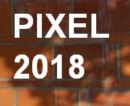Speaker
Description
Silicon pixel detectors are at the core of the current and planned upgrade of the ATLAS experiment at the LHC. Given their close proximity to the interaction point, these detectors will be subject to an unprecedented amount of radiation over their lifetime. At the LHC, the innermost layers will receive damage from non-ionizing radiation in excess of a fluence of 1015 1 MeV neq/cm2, and at the HL-LHC the detector upgrades must cope with one order of magnitude larger fluence. This talk presents a digitization model incorporating radiation damage effects to the pixel sensors, based on Technology Computer Aided Design (TCAD) model. The model is described in detail and predictions for basic pixel cluster properties such as the charge collection efficiency and Lorentz angle are presented alongside validation studies with Run 2 collision data.
